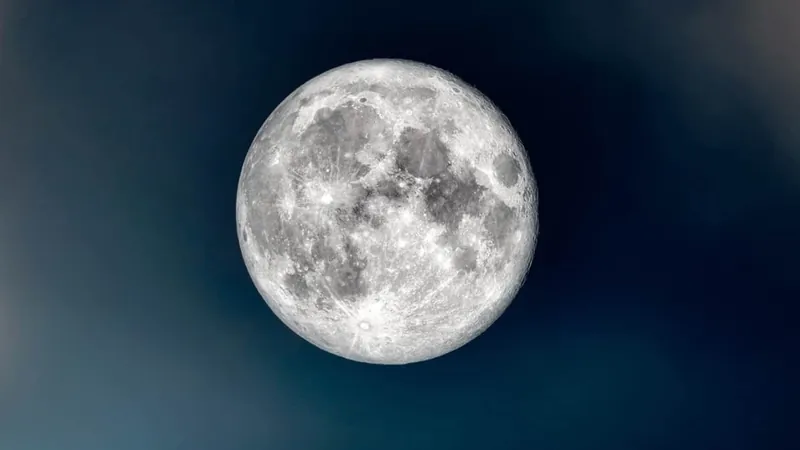
Shocking Discovery: Moon's Far Side Was Volcanically Active for Over a Billion Years!
2024-11-19
Author: Arjun
Groundbreaking Discovery
Groundbreaking research led by Professor Xu Yigang at the Guangzhou Institute of Geochemistry, part of the Chinese Academy of Sciences, unveils a remarkable chapter in the Moon's history that has gone unnoticed until now. Recent analysis of lunar soil samples gathered from the South Pole-Aitken (SPA) Basin during China's ambitious Chang'e-6 mission has revealed that the Moon's far side was volcanically active for an astonishing period of over one billion years.
Research Findings
These lunar samples have been instrumental in shedding light on the Moon's intriguing dichotomy, a stark contrast between its near and far sides. The team, utilizing state-of-the-art Pb-Pb dating techniques, discovered two distinct types of mare basalts: low-Ti and the even rarer very low-Ti (VLT) basalts. Remarkably, the low-Ti basalts date back approximately 2.83 billion years, indicating that volcanic activities were substantial and ongoing.
Significance of the Mission
"The samples returned by Chang’e-6 provide the best opportunity to investigate the lunar global dichotomy," Professor Xu emphasized, highlighting the significance of these findings in understanding the Moon's geological evolution.
Chang'e-6 Mission Overview
Launched on May 3, 2023, from the Wenchang Satellite Launch Centre, the Chang'e-6 mission marked another stride for China's lunar exploration. The lander successfully touched down on the vast crater of the South Pole-Aitken Basin, where it employed a scoop and drill to take samples from the surface, reaching depths of up to two meters.
Additional Discoveries
In addition to the lander, a small rover was deployed to navigate the terrain and document the operation, capturing images of the lander in action.
Implications of the Findings
The implications of this research are groundbreaking. The scientists deduced that the far side of the Moon experienced enhanced volcanic activity between 4.2 billion and 2.8 billion years ago, with the potential for lively magmatic processes continuing for at least 1.4 billion years. This finding was corroborated by independent planetary volcano expert Christopher Hamilton, who noted the critical role of the uncharted lunar samples in this astonishing discovery.
Conclusion
As we continue to peel back the layers of the Moon's past, these revelations promise to reshape our understanding of lunar geology and its implications for the history of our solar system. What other secrets might the Moon still hold? The quest for knowledge is far from over!


 Brasil (PT)
Brasil (PT)
 Canada (EN)
Canada (EN)
 Chile (ES)
Chile (ES)
 España (ES)
España (ES)
 France (FR)
France (FR)
 Hong Kong (EN)
Hong Kong (EN)
 Italia (IT)
Italia (IT)
 日本 (JA)
日本 (JA)
 Magyarország (HU)
Magyarország (HU)
 Norge (NO)
Norge (NO)
 Polska (PL)
Polska (PL)
 Schweiz (DE)
Schweiz (DE)
 Singapore (EN)
Singapore (EN)
 Sverige (SV)
Sverige (SV)
 Suomi (FI)
Suomi (FI)
 Türkiye (TR)
Türkiye (TR)